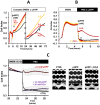p-Hydroxyphenylpyruvate, an intermediate of the Phe/Tyr catabolism, improves mitochondrial oxidative metabolism under stressing conditions and prolongs survival in rats subjected to profound hemorrhagic shock
- PMID: 24599095
- PMCID: PMC3944966
- DOI: 10.1371/journal.pone.0090917
p-Hydroxyphenylpyruvate, an intermediate of the Phe/Tyr catabolism, improves mitochondrial oxidative metabolism under stressing conditions and prolongs survival in rats subjected to profound hemorrhagic shock
Abstract
The aim of this study was to test the effect of a small volume administration of p-hydroxyphenylpyruvate (pHPP) in a rat model of profound hemorrhagic shock and to assess a possible metabolic mechanism of action of the compound. The results obtained show that hemorrhaged rats treated with 2-4% of the estimated blood volume of pHPP survived significantly longer (p<0.001) than rats treated with vehicle. In vitro analysis on cultured EA.hy 926 cells demonstrated that pHPP improved cell growth rate and promoted cell survival under stressing conditions. Moreover, pHPP stimulated mitochondria-related respiration under ATP-synthesizing conditions and exhibited antioxidant activity toward mitochondria-generated reactive oxygen species. The compound effects reported in the in vitro and in vivo analyses were obtained in the same millimolar concentration range. These data disclose pHPP as an efficient energetic substrates-supplier to the mitochondrial respiratory chain as well as an antioxidant supporting the view that the compound warrants further evaluation as a therapeutic agent.
Conflict of interest statement
Figures






Similar articles
-
Para-hydroxyphenylpyruvate inhibits the pro-inflammatory stimulation of macrophage preventing LPS-mediated nitro-oxidative unbalance and immunometabolic shift.PLoS One. 2017 Nov 27;12(11):e0188683. doi: 10.1371/journal.pone.0188683. eCollection 2017. PLoS One. 2017. PMID: 29176872 Free PMC article.
-
Hemorrhagic Shock and Mitochondria: Pathophysiology and Therapeutic Approaches.Int J Mol Sci. 2025 Feb 21;26(5):1843. doi: 10.3390/ijms26051843. Int J Mol Sci. 2025. PMID: 40076469 Free PMC article. Review.
-
Treatment with a novel hemigramicidin-TEMPO conjugate prolongs survival in a rat model of lethal hemorrhagic shock.Ann Surg. 2007 Feb;245(2):305-14. doi: 10.1097/01.sla.0000236626.57752.8e. Ann Surg. 2007. PMID: 17245186 Free PMC article.
-
Cytochrome c limits oxidative stress and decreases acidosis in a rat model of hemorrhagic shock and reperfusion injury.J Trauma Acute Care Surg. 2017 Jan;82(1):35-41. doi: 10.1097/TA.0000000000001257. J Trauma Acute Care Surg. 2017. PMID: 27602909
-
Hemigramicidin-TEMPO conjugates: novel mitochondria-targeted antioxidants.Crit Care Med. 2007 Sep;35(9 Suppl):S461-7. doi: 10.1097/01.CCM.0000279192.96303.E7. Crit Care Med. 2007. PMID: 17713394 Review.
Cited by
-
Para-hydroxyphenylpyruvate inhibits the pro-inflammatory stimulation of macrophage preventing LPS-mediated nitro-oxidative unbalance and immunometabolic shift.PLoS One. 2017 Nov 27;12(11):e0188683. doi: 10.1371/journal.pone.0188683. eCollection 2017. PLoS One. 2017. PMID: 29176872 Free PMC article.
-
Effects of Dietary Phenylalanine and Tyrosine Supplements on the Chronic Stress Response in the Seabream (Sparus aurata).Front Physiol. 2022 Feb 9;12:775771. doi: 10.3389/fphys.2021.775771. eCollection 2021. Front Physiol. 2022. PMID: 35222060 Free PMC article.
-
Effects of amino acid supplementations on metabolic and physiological parameters in Atlantic cod (Gadus morhua) under stress.Fish Physiol Biochem. 2017 Apr;43(2):591-602. doi: 10.1007/s10695-016-0314-3. Epub 2016 Nov 17. Fish Physiol Biochem. 2017. PMID: 27858215
-
Hemorrhagic Shock and Mitochondria: Pathophysiology and Therapeutic Approaches.Int J Mol Sci. 2025 Feb 21;26(5):1843. doi: 10.3390/ijms26051843. Int J Mol Sci. 2025. PMID: 40076469 Free PMC article. Review.
-
Phenylalanine and Tyrosine as Feed Additives for Reducing Stress and Enhancing Welfare in Gilthead Seabream and Meagre.Animals (Basel). 2020 Dec 29;11(1):45. doi: 10.3390/ani11010045. Animals (Basel). 2020. PMID: 33383663 Free PMC article.
References
-
- Kauvar DS, Lefering R, Wade CE (2006) Impact of hemorrhage on trauma outcome: an overview of epidemiology, clinical presentations, and therapeutic considerations. J Trauma 60(6 Suppl): S3–11. - PubMed
-
- Peitzman AB, Billiar TR, Harbrecht BG, Kelly E, Udekwu AO, et al. (1995) Hemorrhagic shock. Curr Probl Surg 32: 925–1002. - PubMed
-
- Cairns CB (2001) Rude unhinging of the machinery of life: metabolic approaches to hemorrhagic shock. Opin Crit Care 7: 437–443. - PubMed
-
- McSwain NE, Champion HR, Fabian TC, Hoyt DB, Wade CE, et al... (2010) State of the art of fluid resuscitation 2010: prehospital and immediate transition to the hospital. J Trauma 70(5 Suppl): S2–10. - PubMed
-
- Riddez L, Drobin D, Sjostrand F, Svensen C, Hahn RG (2002) Lower dose of hypertonic saline dextran reduces the risk of lethal rebleeding in uncontrolled hemorrhage. Shock 17: 377–382. - PubMed
Publication types
MeSH terms
Substances
LinkOut - more resources
Full Text Sources
Other Literature Sources

